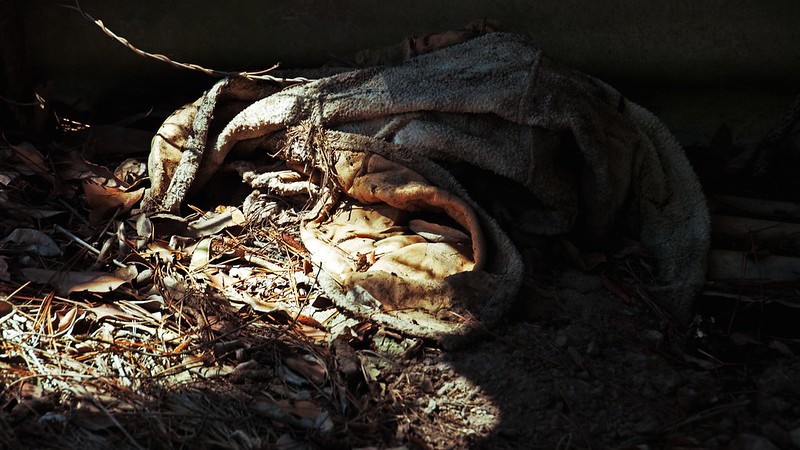
By Hal Pawson, City Futures Research Centre
In Australia and in other countries, the COVID-19 pandemic has prompted extraordinary housing policy innovation and emergency spending. Since March an estimated 5,000 people have been rescued into temporary shelter across Australia. Alongside this, panicked by the vision of abrupt mass unemployment triggering a national rent arrears crisis, state governments across the country have rapidly enacted evictions moratoria.
In the City Futures Research Centre submission to the Australian Senate Inquiry into Homelessness, we reflect on the dramatic policy developments of recent weeks and on the way that the COVID crisis has exposed the seriousness of problems ordinarily given little priority by governments in this country. We also discuss the ways that homelessness is measured and managed in Australia, as well as the need for far-reaching reform to address it in any serious way.
Efforts to tackle the problem
Even in the immediate run-up to the COVID crisis, it’s fair to acknowledge that some states were already embarked on stepped-up action to reduce street homelessness. New South Wales pledged in 2019 to halve rough sleeping by 2025 and formally signed up to the Institute for Global Homelessness model as a means to do so. The Government of South Australia is also on board as one of the IGH Vanguard Cities homelessness reduction group. These are no substitute for the abandoned national commitment to halve homelessness, more broadly, in little more than a decade as pledged by the Rudd Government in 2008. But even more narrowly-defined ambitions espoused by individual states indicate new and welcome policy prioritisation.
The past few years have also seen growing Australian interest in new street homelessness management concepts including Housing First. But the intensifying shortage of affordable rental housing seriously compromises the potential efficacy of this approach. A recent paper reviewing Australian HF projects concluded that: ‘…in all the programmes examined, the aim of providing immediate housing was undermined by lack of quick access to affordable housing, with some unable to access even temporary accommodation’.
The immediate rehousing challenge
Now in early June 2020, we have a situation where there are thousands of people temporarily rescued from street sleeping and homelessness shelters, safely housed in hotels and motels for the time being, but with no clear exit strategy for the point when funding runs dry. Although no overarching commitments have been made, it is very hard to envisage governments overseeing a mass return to the streets.
It might be expected that social housing could take the strain of providing move-on housing, but this is a sector that has shrunk from 6% to a meagre 4% of all occupied dwellings over the past 25 years. More importantly, relative to population, the number of properties let by public housing agencies and not-for-profit community housing providers has halved over this time.
In most jurisdictions the sector therefore lacks the capacity to offer long-term housing to all the rough sleepers and others currently in hotels – assuming that such a rehousing program will need to be enacted within a short timeframe. And although there is a growing clamour for a major social housing investment stimulus program to kickstart economic recovery, the Federal Government has not yet indicated any support for such a plan. Even if approved, such an initiative would offer no quick solution to a near-immediate hotel move-on housing challenge. Some are arguing for this to be addressed through a rapid spot-acquisition program, but a large-scale head-leasing of privately owned properties seems a more realistic option.
New risks ahead
Until now, there also seems to have been little recognition that we may well face a new wave of homelessness in coming months as severe economic recession pushes tens of thousands of vulnerable renters – and even home owners – into housing crisis.
Even now, while the Jobkeeper program remains in place, and jobless people are receiving temporarily boosted dole payments, these programs exclude millions of non-permanent citizens and casual workers. Many among these excluded groups are surely even now being pushed towards a hazardous housing position by sudden loss of income in shut-down sectors like hospitality and tourism. When, later this year, crisis income support measures are ended, and with them, short term evictions moratoriums, there must be a huge risk that a fresh homelessness spike will present Australian governments with a new policy challenge.
The hope must be that the pandemic housing crisis acts as a wake-up call for governments that have until now resolutely resisted the case that rising homelessness is a symptom of much more fundamental flaws in the operation of our housing system. This needs to include a recognition that a more pro-active role for government in that system is essential not just as an emergency response, but as a long-term commitment.
The City Futures submission to the Australian Senate Inquiry into Homelessness is available here: https://cityfutures.be.unsw.edu.au/documents/609/Homelessness_Inquiry_submission_v2.pdf

No Comments so far ↓
There are no comments yet...Kick things off by filling out the form below.